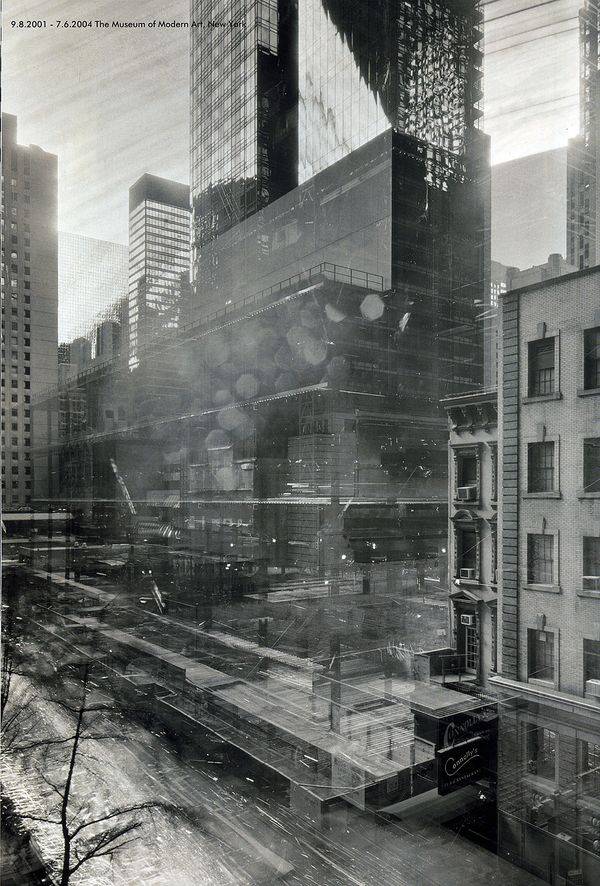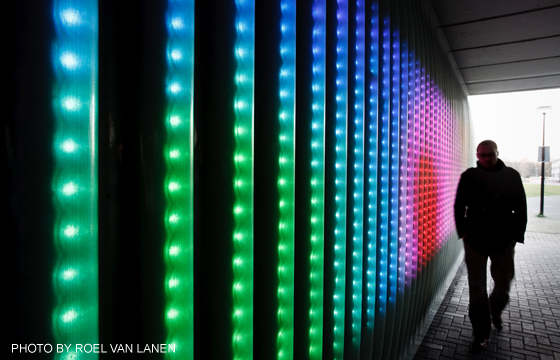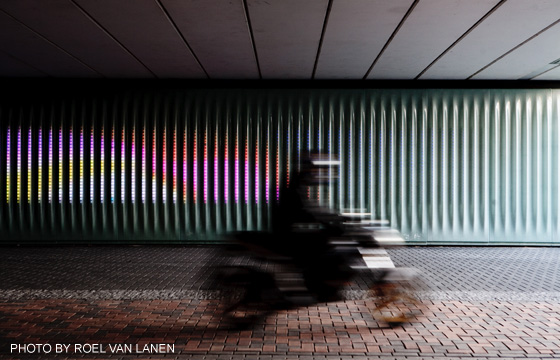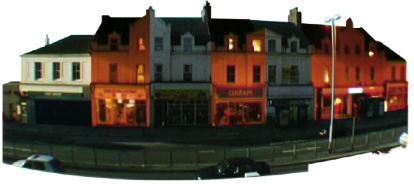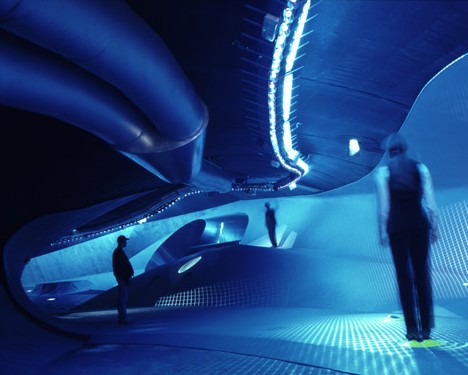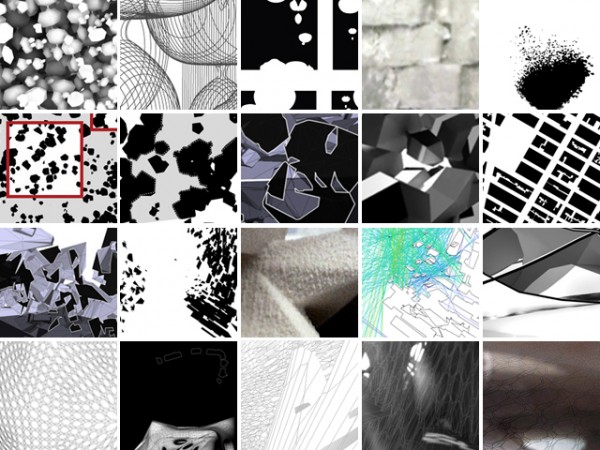atom04:'''References'''
Contents |
REFERENCES - PROJECTS
OPEN SHUTTER, Micheal Weslay
photographs each showing an amazing detail and the intricacy of change. The photos contain the ghosts of the buildings as it is constructed; streaks of the sun throughout the sky; and hundreds of little nicks, trails and instances that elude to something happening during the long exposure.The surrounding buildings stand solid and unchanged, a constant presence in the otherwise changing environment.
THE MOODWALL, CUBE Architecten
The first Moodwall was opened in Amsterdam under intense public interest. The Mood Wall is a 24 meters long wall on which moving images are projected. If someone moves along the wall, it will react with light, color and movement through cameras that use special software of 2500 LED lamps control. This is done through interactive programming, with a dark Moodwall pedestrian overpass into a special entrance for the Amsterdamse Poort shopping.
SPACELAPSE 2003, Christopher Speed
Satisfied that digital video had been able to express different socio-spatial relations with a street through Places of Difference, the author worked with a graduate to develop another three minute short movie that explored socio-temporal relations with space. Using time lapse technology, each shop along a small part of Mutley Plain was manipulated in post-production to portray how many people visit it on a daily basis. By playing back each shop’s time lapse at different speeds, according to its popularity, the collective image was of the street as it changed over time. The sky and pedestrians remained in real time and the result is a startling model of how social activity affects the temporal balance of a street. Pedestrians tend to see a street of shops as a connected unit, and when things alter along the street – such as the shopfronts – it is accepted as part of the street’s dynamic nature. By speeding up and slowing down the rate of each shop’s time lapse the viewer has an opportunity to see the street as a series of components, each with its own time according to its use. The result is a pulsating array of multiple time lapses that gives the viewer an insight into the complexity of a simple street. ‘SpaceLapse’ articulated relational properties that were impossible to see with the eye, and could only be traced through the distortion of time.
THE WATER PAVILION, NOX
The Water Pavilion is as organic and “blobby” on the inside as on its outside, though the concept of sides quickly becomes irrelevant once floors transform into walls and ceiling exist only according to one’s point of view. Designed as an interactive building flush with mist displays and water jets, the Water Pavilion is equipped with sensors that allow visitors to adjust the sights, sounds and other interior features to suit their particular mood of the moment. The sounds of the users were recorded and replayed at the same time in the same space but from a different direction. So that showed the presence through the distortion of the sounds.
POROCITY LAB, Universität für die Angewandte Kunst Wien
From the description of PoroCity lab:
PoroCity will start from Walter Benjamin´s and Siegfried Kracauers notion of porosity as a model of the mutual penetration of public and private life and its potential of reading the city as multilayered system in continuous change. PoroCity refers to the measure of void space in a material sense, but also connects to concepts of improvisation,permeability, elasticity and resilience regarding the urban environment.
Introduced in the 1920ies as a critique of modernist urban planning, the notion of porosity reconnects infrastructural means and civic life. Porosity allows for all ranges of scale, planned and unplanned built form, public and private realms as well as orchestrated and informal courses of action.
